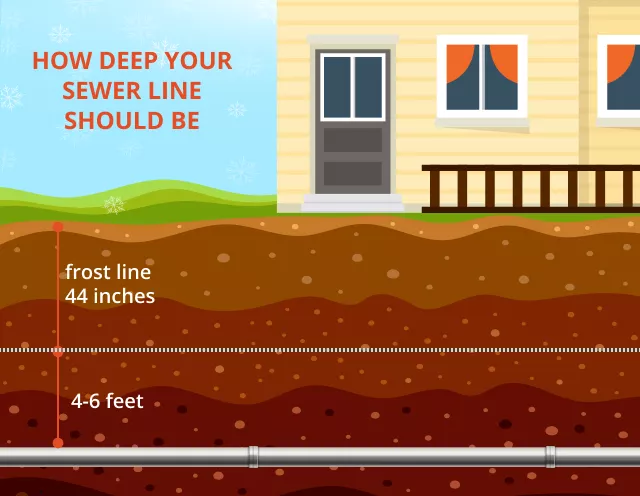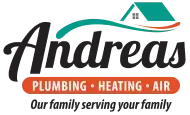
How To Avoid Frozen Pipes in Pennsylvania
Digging your sewer lines to the proper depth is essential for safely and swiftly removing wastewater from your home. In Pennsylvania, the frost line is 44 inches beneath the surface, and any sewer lines installed above this level are at risk of freezing and bursting, causing costly damage.
When it comes to sewer line problems in Pennsylvania, frozen pipes are a leading cause of damage. We recommend that every homeowner verify to determine how deep the sewer lines on their property were placed.
Don’t let your sewer line freeze this winter! Call Andreas Plumbing, Heating & Air Conditioning to replace your home’s sewer line and avoid potential damage.
Why Sewer Line Depth Is Important
The average frost line depth in Pennsylvania is 44 inches. At this freeze depth, groundwater and any water in your sewer lines will freeze. Generally, the colder a region gets in winter, the deeper the frost line.

During especially long, cold winters, freeze depths can drop far below normal. In addition to changes caused by air temperature, frost lines can rise or fall based on soil type and moisture content.
Water freezes above the frost line, causing the soil to heave. Water expands 9% in volume when it freezes, forcing the soil out of position. Anything positioned within or above the frost line will shift, including building foundations, footings, and, of course, sewer lines.
[cta_shortcode]
Factors That Affect Sewer Line Depth
Most communities in Carbon County and throughout Pennsylvania require sewer lines to be installed well below the frost line. This means installing it at least four feet below grade. However, that’s not always the case, and many factors can affect the actual depth of the line, including:
- Climate: As already stated, climate can significantly impact sewer line depth. In Alaska, the frost line is as low as 100 inches.
- Regulations: City and county regulations can vary greatly across every state. It’s imperative for homeowners to confirm what the regulations are within their community.
- Main sewer line location: Proximity to the main sewer line is another factor influencing the installation depth. Lines closer to the main sewer line are typically higher than those farther away. Sewer line depth is determined by the required gradient to reach the main sewer line, and if it’s too shallow of a slope, sewage backups become a problem.
- Soil type: Silty or clay soils are the most likely to freeze. Their porosity traps moisture, which can then freeze.
- Age: Regulations governing sewer line depth can change over time. This means that homes built 100 years ago may have sewer lines that are much deeper or shallower, depending on the community, than homes built five or 10 years ago.
Schedule Sewer Line Services in Carbon County
At Andreas Plumbing, Heating & Air Conditioning, our sewer line specialists are always prepared to provide the sewer line installation, maintenance, and repairs that Carbon County homeowners depend on.
As a fourth-generation, family-owned business, we’re committed to our community and the needs of our clients. Our technicians adhere to strict safety and quality standards, and we guarantee the durability and reliability of our services.
When you choose our team to service your sewer lines, you’ll always enjoy:
- 24/7 emergency services
- Honest, upfront pricing
- Clean and tidy workspaces — we leave no mess behind
- Strict adherence to safety and all applicable regulatory requirements
- Licensed and insured technicians
Contact Andreas Plumbing, Heating & Air Conditioning to learn more about our company and request sewer line services in Carbon County.
